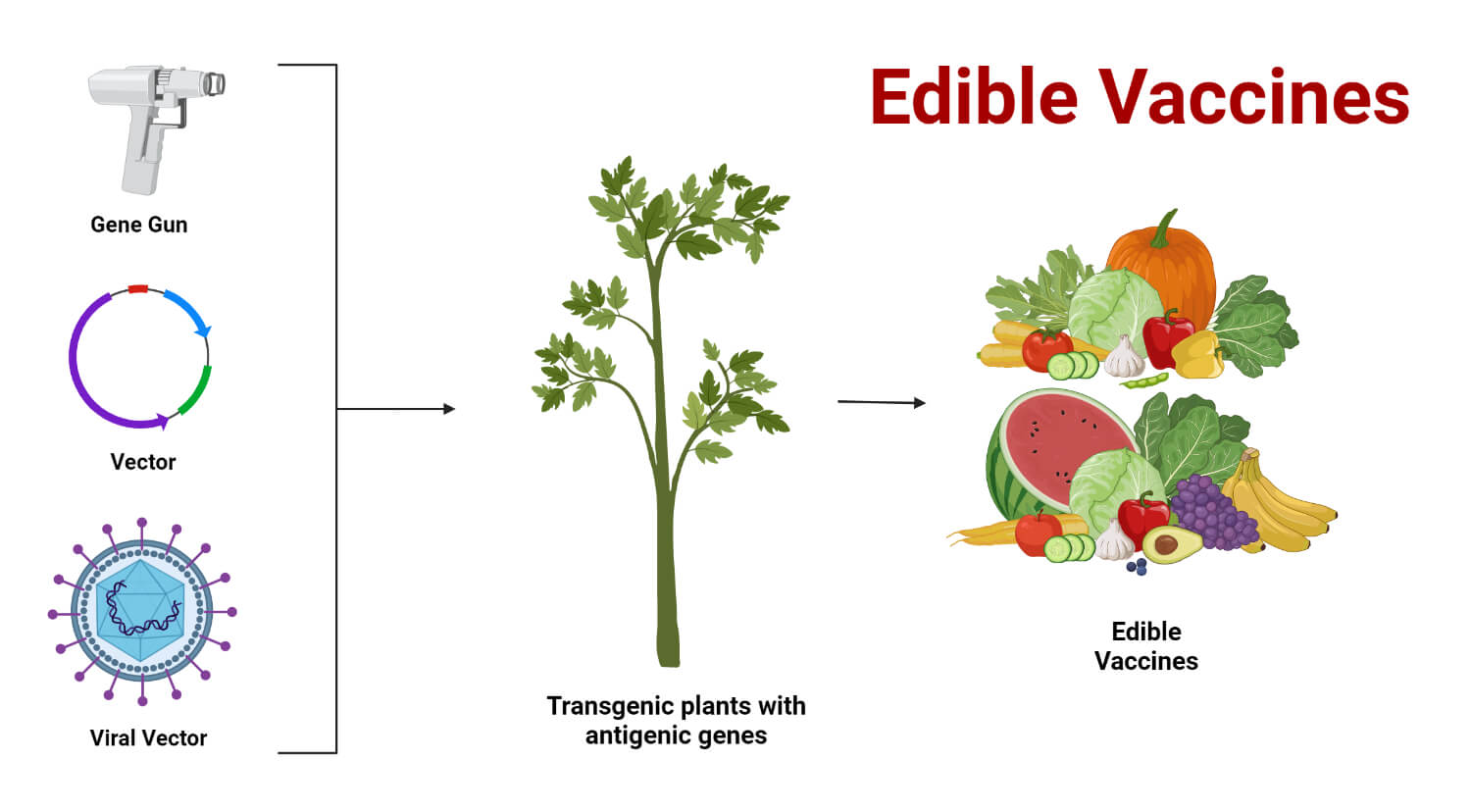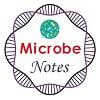Traditional vaccine administration can be painful, but edible vaccines have come to our rescue.
Edible vaccines are produced from one edible part of plants, such as fruits and vegetables, that can be ingested orally rather than injected like traditional vaccines.

- The edible vaccine concept involves using genetic engineering techniques to introduce genes that encode specific antigens from pathogens into plants.
- The traditional vaccine administration methods involve the delivery inactivated form of a virus or bacteria, a specific protein, or a genetically engineered molecule that resembles the pathogen into the body through injection or nasal spray.
- This exposes the immune system to a harmless form of the pathogen or its antigens, which the body recognizes as foreign and mounts an immune response against it.
Interesting Science Videos
Overview of the concept of edible vaccines
The innovative approach to vaccination has the potential to revolutionize the field of immunization by offering several advantages over traditional vaccines.
Edible vaccines are produced by introducing the genes that encode specific antigens from a pathogen into the genome of a plant.
The plant produces the edible vaccine antigens in its edible parts, such as fruits or leaves. When the part of the plant is consumers, the human digestive system processes the vaccine antigens, triggering an immune response that produces protective antibodies against the pathogen.
The main advantage of edible vaccines is their potential to be more easily and cost-effectively produced than traditional vaccines. It also has the potential to overcome some of the limitations of traditional vaccines, such as the need for refrigeration and specialized storage and transportation infrastructure.
While they can eliminate painful needles, edible vaccines have some challenges with their development and use. Further, it includes concerns about the safety of genetically modified plants, the difficulty of controlling the vaccine dosage, and ensuring the vaccine is delivered consistently and effectively.
History of Edible Vaccines
People in developing countries may not have access to the vaccines they need as the traditional vaccines are costly, require skilled medical people for administration, and are less effective in persuading a mucosal immune response.
The first report of edible vaccine ( surface protein from Streptococcus) in tobacco, at 0.02% of total leaf protein, appeared in 1990 as a patent application published under the international patent cooperation treaty.
Dr. Charles Arntzen and his coworker introduced the concept of transgenic plants as a product delivery system for subunit vaccines in which edible use of transgenic crop plants was used.
After that, the Boyce Thompson Institute for Plant Research researcher at Cornell University produced the world’s first edible.
The concept of edible vaccines dates back to the early 1990s when researchers first demonstrated that plant cells could be genetically modified to produce antigens from a pathogen. In 1997, researchers at the Boyce Thompson Institute for Plant Research at Cornell University produced the world’s first edible vaccine by genetically engineering potatoes to produce the antigen for the Hepatitis B virus.
How Edible Vaccines Work
The immune system is a network of cells, tissues, and organs that defend the body against foreign substances.
Further, the immune system can be divided into two main categories: innate and adaptive. While the innate immune system is the first body line of defense, and the adaptive immune system targets specific foreign substances.
The edible vaccine introduces antigens into the body through a food product. The antigen is a substance that triggers an immune response for the production of antibodies to fight off the targeted diseases.
Mechanisms of action of edible vaccines
Edible vaccines are required to activate the mucosal immune response system(MIS), where human pathogens initiate infection.
Mucosal surfaces are found in the lining of the digestive, respiratory, and urinary reproductive tracts. Further, there are multiple ways by which antigens can enter the gut mucosal layer, called M cells and macrophages.
The macrophages are usually activated by interferon-gamma, macrophages presenting fragmented peptides to the helper T cells that produce antibodies.
M cells are another way the antigens are transported to the T cells. The antigenic epitopes are present on the surface of APC with the assistance of the helper of T cells, which then activate B cells.
The activated B cells migrate to the mesenteric lymph nodes, where they mature plasma cells, finally migrating to the mucosal membrane to secrete immunoglobulin A (IgA). IgA forms the secretory IgA transported to the lumen.
Producing secretory IgA is another complex since 50% of secretory IgA (sIgA) in the gut lumen is produced by B1 cells. These sIgA are polyreactive and recognize foreign antigens. While in the lumen, the sIgA neutralizes the invading pathogen by reacting with the specific epitopes.
Advantages of edible vaccines
- Edible vaccines are produced from inexpensive plants to cultivate, harvest, and process, which is more cost effective than traditional vaccines.
- It does not require specialized storage facilities and is easier to store and transport to remote areas.
- It can be administered orally, eliminating the need for needles and syringes to reduce the risk of infections and injury.
- Further, the edible vaccine is administered with the help of needles, reducing the risk of contamination from the blood-borne pathogen. Also, the potential for simultaneous delivery of multiple vaccines.
Disadvantages of edible vaccines
- It may not be as effective as a traditional vaccine as the immune response generated is less robust than the vaccine administered via injection.
- It is difficult to control the vaccine dosage delivered to each individual, which can lead to inconsistencies in the immune response generated by the vaccine.
- The edible vaccine may face regulatory hurdles that traditional vaccines do not.
Conclusion
The development of edible vaccines is a promising area that has the potential to revolutionize the way vaccines are administered and delivered. While the efficacy and safety of edible vaccines still need to be thoroughly evaluated, they can provide a cost-effective and easy-to-administer alternative to traditional vaccines, particularly in remote or rural areas where access to healthcare is limited.
References
- https://www.ncbi.nlm.nih.gov/pmc/articles/PMC7090473/
- https://www.sciencedirect.com/topics/medicine-and-dentistry/edible-vaccine
- https://www.ncbi.nlm.nih.gov/pmc/articles/PMC7149355/
- https://www.biotechnologynotes.com/transgenic-plants/edible-vaccines-applications-advantages-and-limitations/627
- https://ecevr.org/DOIx.php?id=10.7774/cevr.2020.9.2.164
- https://www.scielo.br/j/bjmbr/a/ZwWDHygc479XjsgPN9PpZVm/
- https://www.sciencedirect.com/science/article/pii/S0255085721021654
- https://www.sciencedirect.com/science/article/pii/S0966842X98013572
- https://onlinelibrary.wiley.com/doi/abs/10.1002/ptr.7475
